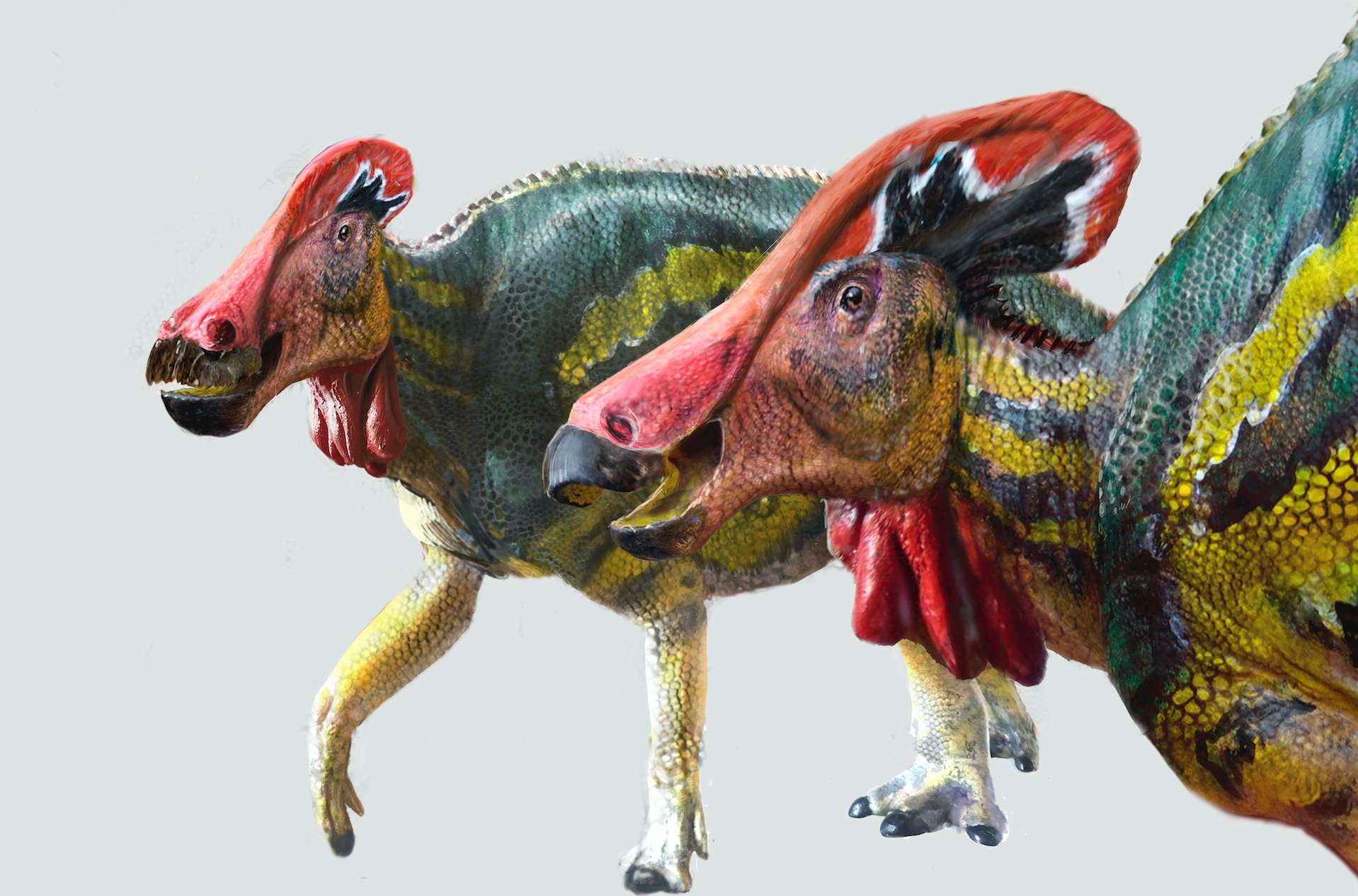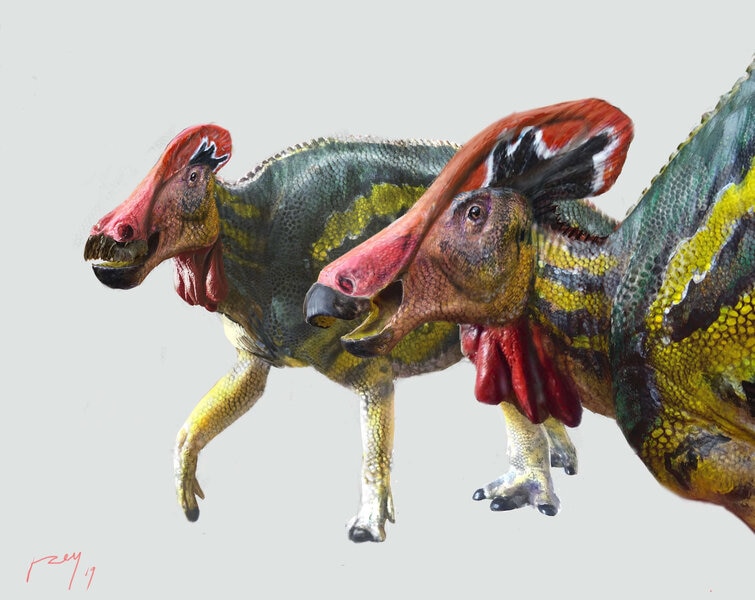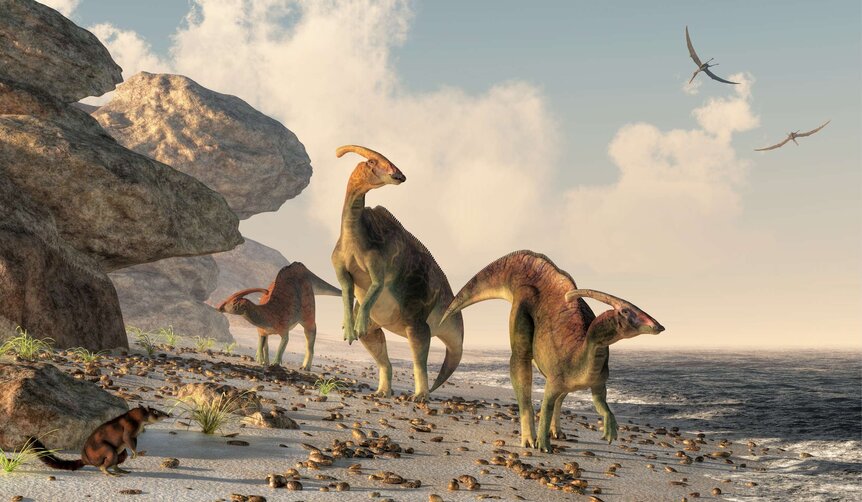Create a free profile to get unlimited access to exclusive videos, sweepstakes, and more!
This crested dino found in Mexico featured low-frequency hearing for advanced communication

Paleontologists worldwide are just starting to understand the complexities of how dinosaurs communicated while they were stomping through primeval forests and sloshing around in steamy swamps.
Now another piece of the puzzle has been revealed with the discovery of a new species of crested herbivorous creature whose ear structure allowed them to receive and interpret a wide range of low-frequency sounds.
The tail bones of this regal plant-eating dinosaur, which existed some 73 million years ago, were first unearthed back in 2005 in Mexico’s Cerro del Pueblo Formation near Presa de San Antonio in Coahuila.
Eight years later, paleontologists from the National Institute of Anthropology and History (INAH) in Mexico and the National Autonomous University of Mexico (UNAM) joined forces to recover the tail and any other fossilized remains of the extinct animal now named Tlatolophus galorum.
According to an official statement, the team urgently needed to retrieve the “talkative” beast’s protruding tail that was in danger of being damaged due to rain, wind, and erosion.
"Although we had lost hope of finding the upper part of the specimen, once we recovered the tail we continued digging under where it was located," said lead author Ángel Alejandro Ramírez Velasco, from the UNAM's Institute of Geology. "The surprise was that we began to find bones such as the femur, the scapula and other elements."
Research published in the online journal Cretaceous Research indicated that the well-preserved specimen had perished in sediment-rich waters that blanketed and protected the fragile bones. Their new-found dinosaur was approximately 40 feet long from snout to tail and was between 10 to 13 feet tall.
Paleontologists on the project eventually recovered 34 individual bone fragments, which composed 80 percent of the dinosaur's entire skull.These fossils included its crest, its lower and upper jaws, palate and neurocranium, the compartment of the skull that would have encased the brain.
Since scientists recovered a majority of the dinosaur's skull, they easily compared this individual specimen with other known species. Researchers knew the dinosaur was a member of the hadrosaur family, a broad collection of duck-billed dinosaurs. However, they soon discovered that that its crest and nose were vastly different from other known hadrosaurs, indicating the presence of a new a new genus and species.
Its officially catalogued name, Tlatolophus galorum was derived from the Nahua Indigneous people’s word tlahtolli, which means "word," and the Greek word lophus, which translates to "crest."
The name is appropriate, as the creature’s crest is shaped like a "virgula," a symbol used by Mesoamerican peoples to represent communicative action and knowledge in itself in codices.
As their investigations proceeded, careful examination of the ear bone structure by the researchers allowed for a rare peek at how these ornate Cretaceous-era dinosaurs might have communicated in ways similar to modern elephants.
"We know that they had ears with the ability to receive low-frequency sounds, so they must have been peaceful but talkative dinosaurs," explained Ramírez Velasco. “The dinosaurs may have also emitted loud sounds to scare off carnivores or for breeding.”




























